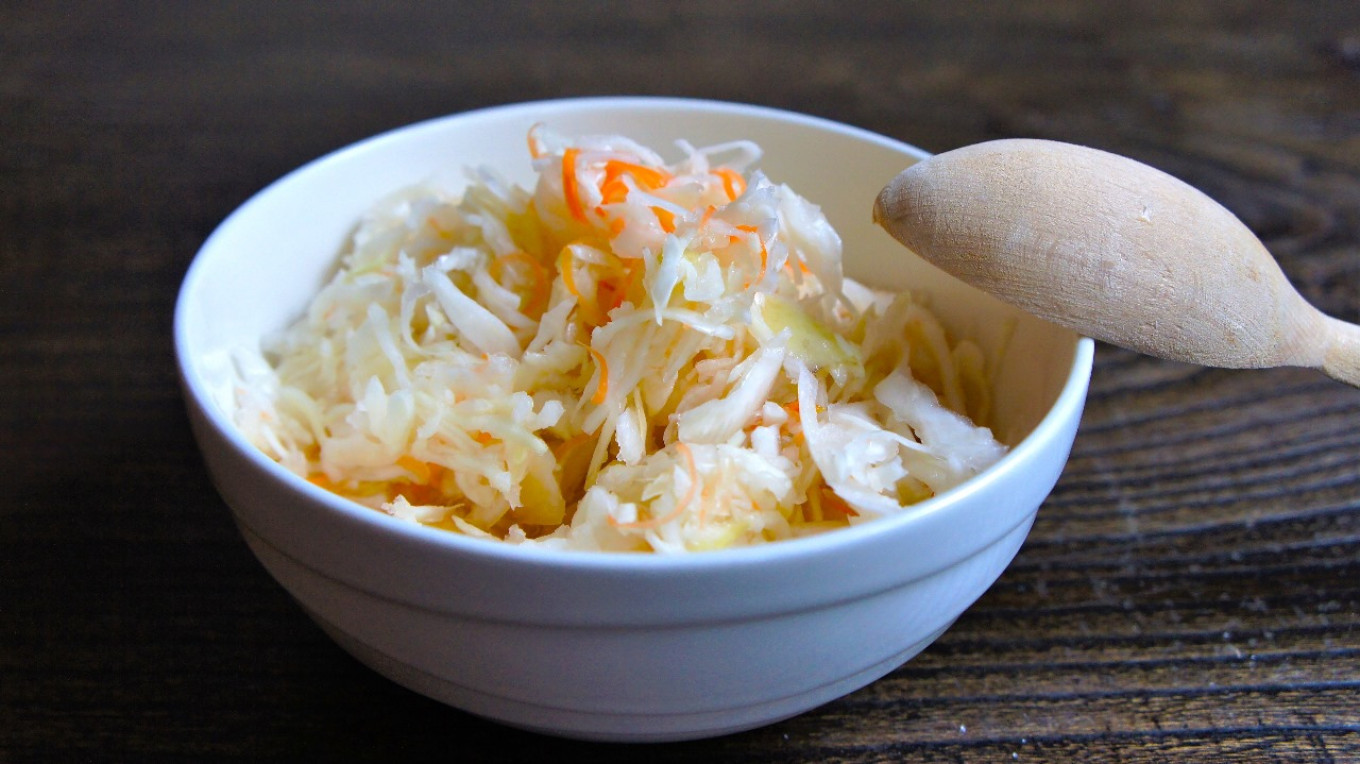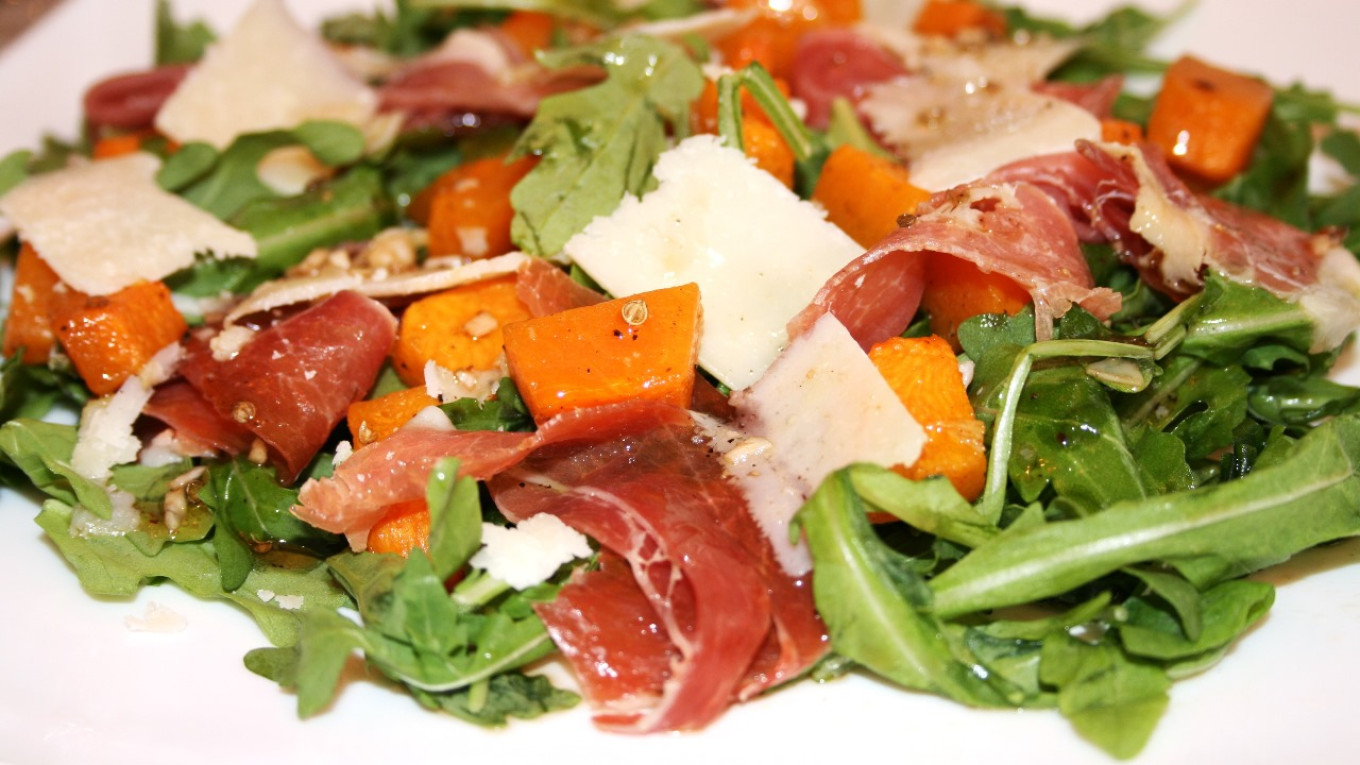We can't live without salads; they are an essential part of our everyday life. Their names, so utterly familiar in Russia, sound strange to foreigners. We have salad Olivier; vinaigrette salad (not dressing); “herring under a fur coat” (really); a spring salad called "Mimosa" that is not a flower or a drink; and even a salad made with crab sticks that is not historical at all. Isn’t salad just part of our cultural code? But it was not always like this. Russians only made salads an essential part of their diet in the middle of the 20th century. Before that, things were somewhat different.
Before diving into the emergence and history of salads in Russia, it would be good to try to clearly understand how a salad differs from an appetizer. It’s rather difficult to define them in most cuisines, and in Russian cuisine it’s almost impossible to find the line that divides them. For example, is herring with onions a salad or an appetizer? It’s very clearly an appetizer. But “herring under a fur coat,” where potatoes, beets and mayonnaise are added, is a salad. For those who doubt the salad pedigree of “herring under a fur coat,” let us remind you of a similar dish — the Mimosa. Canned saury or salmon take the place of herring. And its full name is, after all, Mimosa salad. But you see the difficulties. The distinction between appetizer and salad at the Russian table is elusive.
Traditionally, salads contain something plant-based — leafy greens, vegetables or fruits — that are “dressed” with some kind of sauce. But lettuce or other leafy greens were virtually unknown in the Russian kitchen. And sauces – called “decoctions”— were served on meat and poultry, not vegetables.
Leafy greens appeared here somewhere in the 17th century, but as a curious new delicacy for aristocrats. Fresh vegetables are mentioned in the ancient householder’s book "Domostroi" —"In summer it is a pleasure to eat melons, peas, carrots, cucumbers and all kinds of vegetables" — but their place in the meal is not specified. In general, at that time a meal began with a meat soup, cabbage soup, or fish soup, and the concept of a “salad” or “salad course” simply did not exist. That said, we can’t say for certain that there weren’t raw vegetables served. It’s likely that fresh vegetables were so simple and obvious that no one thought to mention, say, fresh cucumbers among other dishes served. There is nothing noteworthy about munching on a fresh cucumber while waiting for dinner to be served.
So we do not find classical salads in the cuisine of the Domostroi era. But there are a number of dishes that aren’t exactly salads in the modern understanding, but they served the same function. These were light vegetable dishes, such as chopped or grated radishes in kvass. Writer Pavel Melnikov-Pechersky in his novel "In the Woods" (1874) mention a dish of boiled peas with onions dressed with flaxseed oil. What was it? Salad? Well, it clearly wasn’t a hot dish and not a main course.

We should also remember that many centuries ago the role salads play today was then played by pickled and salted foods: fermented cabbage, salted cucumbers, pickled apples, and so on. They could be eaten on their own, dressed with oil, or served in kvass. In the last case, something like cucumbers with greens and kvass was something of a transitional dish on the way to cold kvass soups or okroshka. You could even say it’s really a kind of soup. Be that as it may, it is still a dish that essentially performs the function of a salad.
The salads we know today in Russian cuisine were borrowed from other lands. For example, vinaigrette salad appeared at the end of the 18th century. It was different from today’s salad and was called a "cleansing vinaigrette." That is, it was used to "cleanse" the table before another dish was brought it to “decorate” it. This is another trait of the “old” salads. At that time — and in fact right up to the mid-20th century — salads were not a separate course that began a meal. They were a complement to the hot dish of the main course.

In old cookbooks, including even those printed in the 19th century, you won’t find a section called "Salads" (as separate dishes in the current understanding). In Yekaterina Avdeyeva's 1840 cookbook salads are included in the — wait for it — 13th chapter after appetizers, soups and hot dishes. And the chapter is called "Salads and Garnishes for Hot Dishes.” In Molokhovets' book (1870s) you have to read to chapter 10 to find “Salads Served with Meat and Fish Dishes.” By the way, it’s the same in the first edition of "The Book of Tasty and Healthy Food" (1939). There salads come after sweet dishes and doughs. And only in post-war editions are they moved to their current place — before the main courses served at dinner.
Where did our salads come from? They appeared in our cuisine as separate dishes (not garnishes) in various ways, but primarily they were borrowed from European (mostly French) cuisines. This concerns everything from vinaigrette salad, which came to us in the late 18th century, to Caesar salad, which was introduced to the Russian public in the 1990s.
Sometimes salads “migrated” from other categories. For example, in its "maidenhood" (in the 1860s) salad Olivier was called "game mayonnaise." At the beginning of the 19th century, “mayonnaises” were not sauces, but separate dishes (sturgeon mayonnaise, grouse mayonnaise, etc.) They were clearly not salads, but they were served in the "second break" after appetizers and soups and before hot dishes and dishes served with sauces.

And then salads were put together from new products like combining building blocks. A good example is the salad "Mimosa." In the late 1930s, when canned fish like saury and salmon were in every grocery store, people needed to know how to use them. Mixed and layered salads, made with factory-produced mayonnaise, came just in time.
And finally, let's not forget about the creativity of cooks and homemakers. There is much debate about whether there are analogs to the famous Soviet “herring under a fur coat" in foreign cuisines. We believe there are. In Scandinavia, for example, herring is also served with onions and beets. But we don't think that Soviet housewives of the late 1960s when “herring under fur coat” appeared were experts in Scandinavian cuisine.

A few last words about Russian national salads. It’s true that they are on the table as something to eat after a shot of vodka. That’s why they are so dense and filling. In fact, that’s why they were moved to the beginning of the meal: toss back a shot of vodka, take a forkful of rich salad.
But today we aren’t going to make a heavy, mayonnaise-laden Soviet salad. We’re going to make something lighter and perfect for fall. And we’re following the old tradition of borrowing some new ingredients and making the salad our own. In fact one ingredient has been borrowed so much around the world, it has many different names: ruccola, arugula, rocket or roquette!
Pumpkin Arugula Salad
For 4 servings
Ingredients
- 800 gr (1 ¾ lb) pumpkin (after peeling and seeding)
- 200 g arugula
- 1 package (100 g or 3.5 oz) jamón ibérico, proscuitto or any good dry-cured ham
- 100 g (3.5 oz) Parmesan cheese
- pepper, salt
- coriander seeds
- 5-6 Tbsp of olive oil
- 1 tsp honey
- 2-3 Tbsp balsamic vinegar
- 2 garlic cloves
- 100 g (3.5 oz) toasted sunflower or pumpkin seeds

Instructions
Note: Prepare the pumpkin in advance but put the salad together when your guests arrive and just before serving. Arugula leaves are very tender and quickly wilt unattractively under the dressing.
- First make the dressing, which you need to coat the pumpkin as it bakes and then to dress the salad. Grind a pinch of coriander seeds in a mortar (you can also use ground coriander, but freshly ground coriander is much more flavorful). Mix with the other ingredients: a pinch of ground pepper, salt, finely chopped garlic, honey, olive oil and vinegar.
- Meanwhile, preheat the oven to 190°C/375°F. Peel, seed and cut the pumpkin into 2 cm (about 1 inch) cubes, put them in a bowl and pour 2/3 of the prepared dressing over them. Mix it all very well so that each pumpkin cube is covered with the dressing. Place the pumpkin on a baking tray and put in the oven for 20-30 minutes until slightly browned.
- While the pumpkin is cooling, place clean arugula on a brightly colored shallow dish. Place the pumpkin on top (it's already beautiful, isn't it?), then dot with slices of ham and coarsely grated Parmesan. Sprinkle with the seeds and drizzle with the remaining dressing. And bring it straight to the table!

A Message from The Moscow Times:
Dear readers,
We are facing unprecedented challenges. Russia's Prosecutor General's Office has designated The Moscow Times as an "undesirable" organization, criminalizing our work and putting our staff at risk of prosecution. This follows our earlier unjust labeling as a "foreign agent."
These actions are direct attempts to silence independent journalism in Russia. The authorities claim our work "discredits the decisions of the Russian leadership." We see things differently: we strive to provide accurate, unbiased reporting on Russia.
We, the journalists of The Moscow Times, refuse to be silenced. But to continue our work, we need your help.
Your support, no matter how small, makes a world of difference. If you can, please support us monthly starting from just $2. It's quick to set up, and every contribution makes a significant impact.
By supporting The Moscow Times, you're defending open, independent journalism in the face of repression. Thank you for standing with us.
Remind me later.







